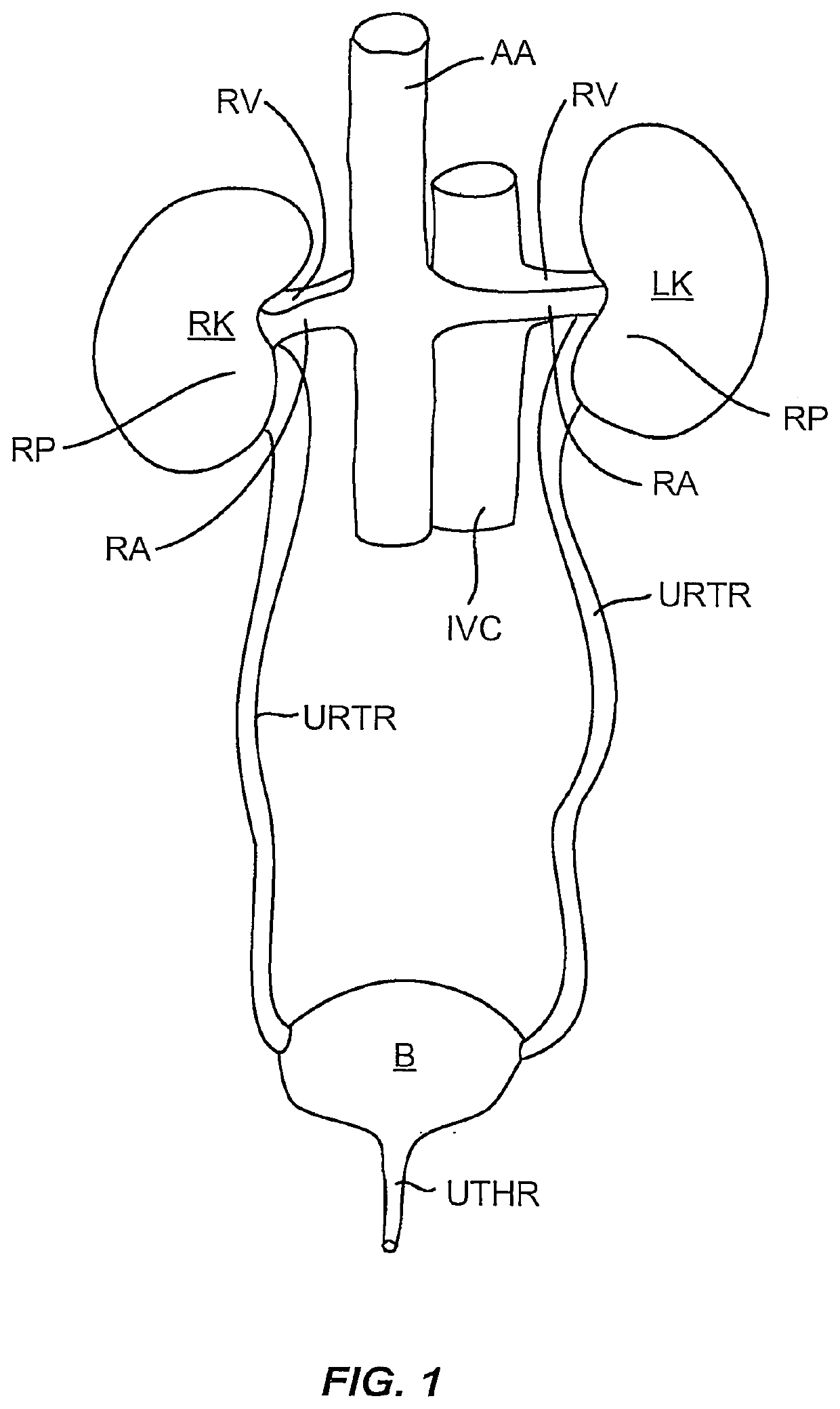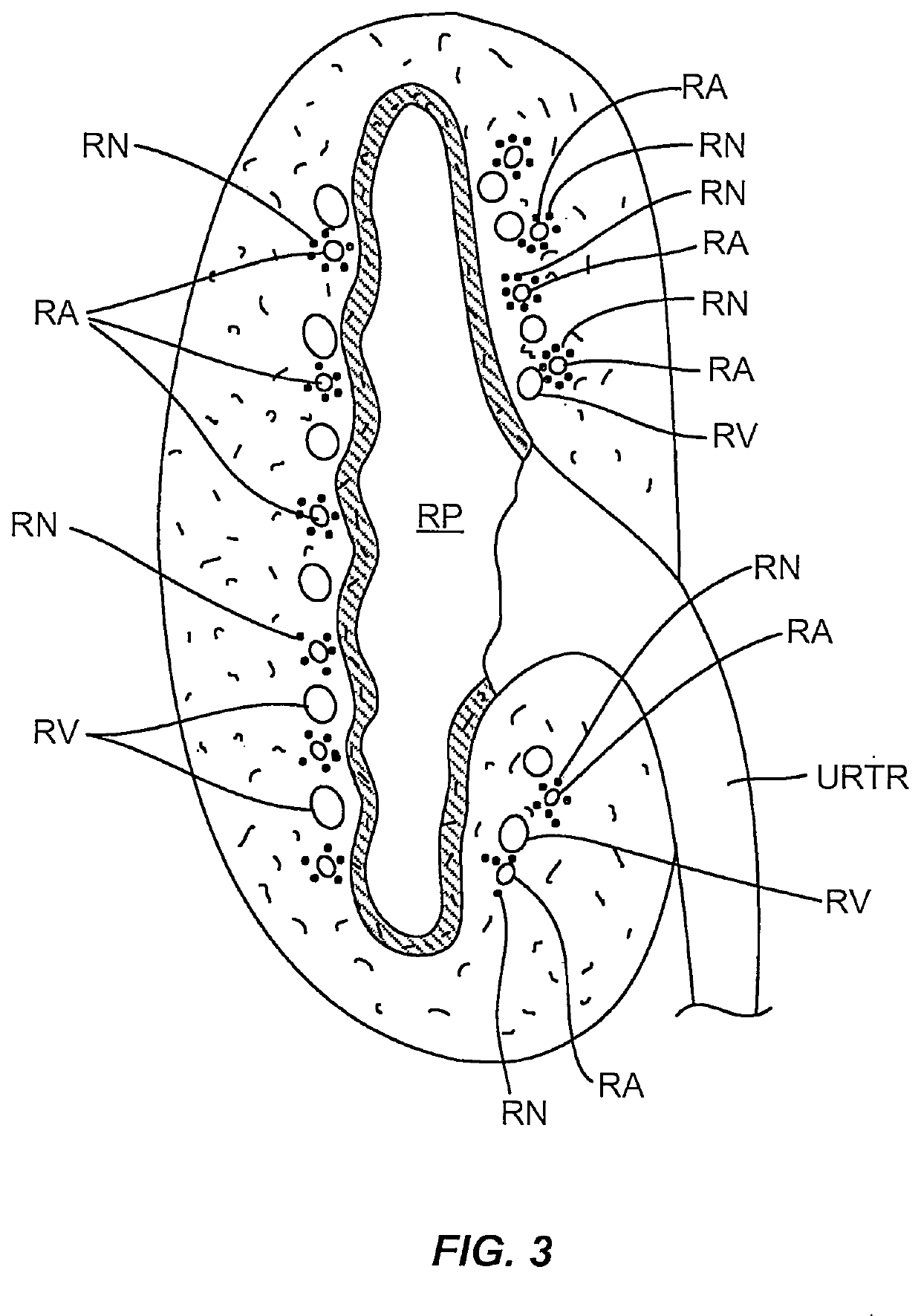Methods and devices for treating polycystic kidney disease and its symptoms
a polycystic kidney and kidney disease technology, applied in the field of medical devices, systems, apparatus, and methods for modifying nerve function and treating disease, can solve problems such as disruption of afferent nerves, and achieve the effect of inhibiting or modulating the function of renal nerves
- Summary
- Abstract
- Description
- Claims
- Application Information
AI Technical Summary
Benefits of technology
Problems solved by technology
Method used
Image
Examples
Embodiment Construction
lass="d_n">[0061]The novel features of the invention are set forth with particularity in the appended claims. A better understanding of the features and advantages of the present invention will be obtained by reference to the following detailed description that sets forth illustrative embodiments, in which the principles of the invention are utilized, and the accompanying drawings of which:
[0062]A patient's urinary tract is diagrammatically illustrated in FIG. 1. The urinary tract includes the bladder B, which receives urine from the right and left kidneys RK and LK and drains the urine through the urethra UTHR. The kidneys each receive oxygenated blood through the renal artery RA from the abdominal aorta AA and blood from the kidneys is returned through the renal vein RV to the inferior vena cava IVC. Of particular interest to the present invention, the urine which is processed in the kidney is received in an interior cavity of each kidney referred to as the renal pelvis RP which a...
PUM
 Login to View More
Login to View More Abstract
Description
Claims
Application Information
 Login to View More
Login to View More - R&D
- Intellectual Property
- Life Sciences
- Materials
- Tech Scout
- Unparalleled Data Quality
- Higher Quality Content
- 60% Fewer Hallucinations
Browse by: Latest US Patents, China's latest patents, Technical Efficacy Thesaurus, Application Domain, Technology Topic, Popular Technical Reports.
© 2025 PatSnap. All rights reserved.Legal|Privacy policy|Modern Slavery Act Transparency Statement|Sitemap|About US| Contact US: help@patsnap.com



